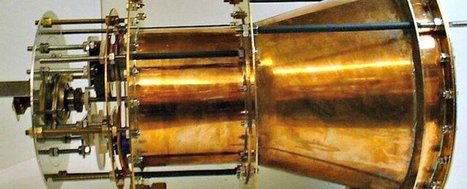After months of speculation and leaked documents, NASA's long-awaited EM Drive paper has finally been peer-reviewed and published. And it shows that the 'impossible' propulsion system really does appear to work.
The NASA Eagleworks Laboratory team even put forward a hypothesis for how the EM Drive could produce thrust – something that seems impossible according to our current understanding of the laws of physics.
In case you've missed the hype, the EM Drive, or Electromagnetic Drive, is a propulsion system first proposed by British inventor Roger Shawyer back in 1999.
Instead of using heavy, inefficient rocket fuel, it bounces microwaves back and forth inside a cone-shaped metal cavity to generate thrust.
According to Shawyer's calculations, the EM Drive could be so efficient that it could power us to Mars in just 70 days.
But, there's a not-small problem with the system. It defies Newton's third law, which states that everything must have an equal and opposite reaction.
According to the law, for a system to produce thrust, it has to push something out the other way. The EM Drive doesn't do this.
Yet in test after test it continues to work. Last year, NASA's Eagleworks Laboratory team got their hands on an EM Drive to try to figure out once and for all what was going on.
And now we finally have those results.



 Your new post is loading...
Your new post is loading...








Will the journey to Mars one day be shorter that Jules Verne 80 days to circumtravel the world ?
Here is the question of t(h)rust as Flying Salad Bowls may be underway... (time to watch "Iron Sky" one more time)